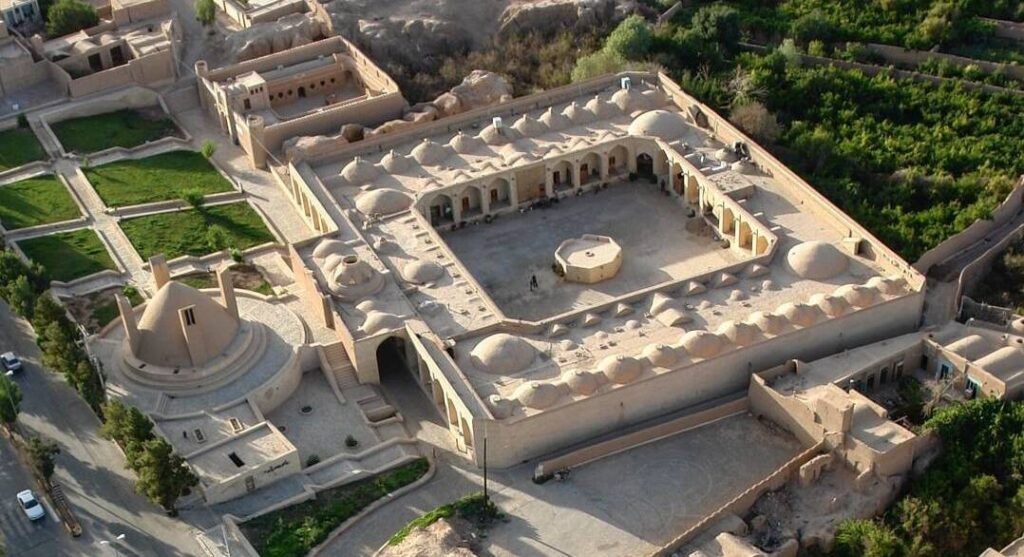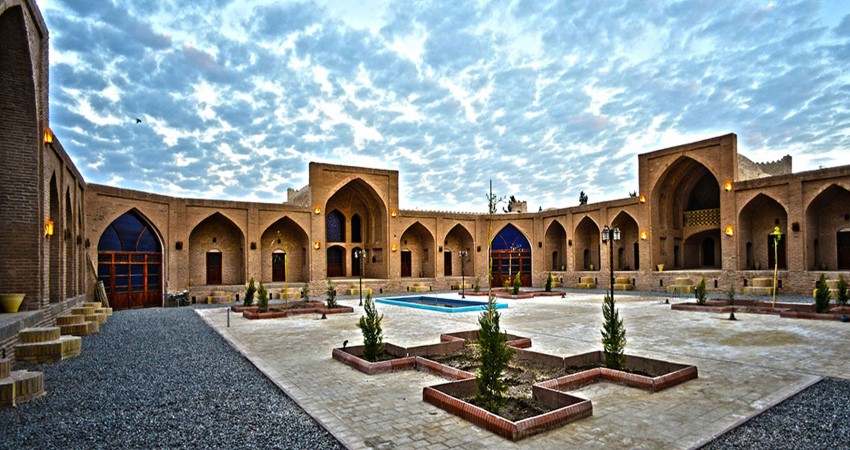Caravanserai in Iran

The Best Caves of Iran
September 21, 2020
The best of Qazvin
September 28, 2020The history of caravanserai in Iran – large road inns – goes back to very distant times: Greek historians cite the caravanserais from the Achaemenid era built on the main roads of the Empire, at more or less regular intervals compared to the distance traveled every day by a caravan of travelers or merchants.
The caravanserai is a building that accommodates merchants and pilgrims along the roads and in the cities. Depending on the place, the name changes: in the Iranian world, it will be called rather a khan.
Iran was part of the Silk Road that was used for centuries by traders. The caravan convoys had to take sometimes difficult roads through high mountains and deserts. The Silk Road was used by traders, but also by pilgrims, soldiers, and spies.
The harsh climate and aridity of much of the Iranian plateau, where rainfall is relatively low, meant that there were resting places on the roads where travelers could obtain water and food. Given the long-distance that often separates rural and urban agglomerations, crossing the country would be almost impossible without the existence of these road hostels, and the different regions would naturally remain isolated from each other.

A caravanserai is always fortified and includes both stables (or enclosures) for mounts and beasts of burden, stores for goods, and rooms for passing people. Often the shops are on the ground floor and the bedrooms are on the first floor.
Under the Arsacids and Sassanids, the security of the roads and the existence of the caravanserais were imperative for the control of the vast Persian Empire. Furthermore, Iran was on the international trade routes that linked the West, the Mediterranean world, and the Far East. The main routes of the Silk Road crossed the northern regions of the Empire.
Besides the strategic importance of the roads for the Persian Empire, the road safety and the comfort of the travelers and the merchants who traveled these long roads ensured a very important source of income for the royal treasury.
The Achaemenid and Arsacid caravanserais have, alas, all disappeared, but the remains of rare Sassanid caravanserais which have been discovered by archaeologists show that the great caravanserais of the Islamic period took as a model the general plan of their pre-Islamic prototype.
The structure of the Iranian caravanserai is characterized by the organization of the buildings around an open central courtyard. However, this plan is subject to the modifications required by the climatic situation of the various Iranian regions. This adaptation concerns both the configuration and the external structure and the use of construction materials.
Today the caravanserai in Iran is a part of the accommodation for travelers and is mainly used for tourism.

